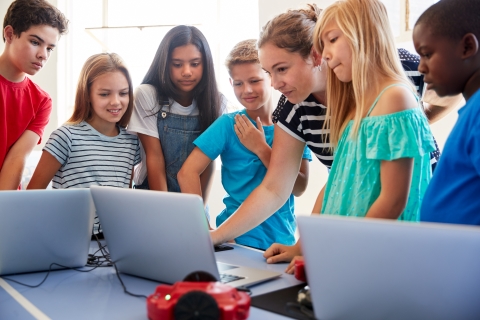
I was never the biggest fan of science class, although botany and human anatomy piqued my interest. I appreciated learning about the integrated systems of plants and the human body, and I was fascinated by how tiny, atomic changes impacted the whole system to generate diverse life.
Over time, my interests have led me to my current role, where I have an opportunity to lead research efforts and explore the connections between Emergenetics® theory and social neuroscience. While it may sound like a person needs to be a science geek to appreciate this work, that is simply not the case. It’s extremely useful for educators to know what’s going on in the brain, so they can use the knowledge to inform classroom, school- and district-wide strategies.
In this blog series, I am going to describe what social neuroscience is, its connection to education and offer tips to apply the information to support school communities.
What is social neuroscience?
According to one of its foremost experts Professor Mary Helen Immordino-Yang, social neuroscience is the blending of cognitive and social processing on affective responses to learning. In essence, it is the interaction of what our mind is thinking and how our body is physically reacting when we engage with others and process information.
Social neuroscience helps us understand how feelings and emotions contribute to thought. It also explains how rational thought contributes to emotional thought as it triggers physical reactions in our bodies.
How can social neuroscience influence education systems?
As Professor Immordino-Yang shared in her presentation at the American Educational Research Association, many teachers and administrators in the past assumed that feelings needed to be taken out of the classroom and that subject matter should be studied purely from a cognitive standpoint in order for youth to learn effectively.
Yet, the research clearly demonstrates that humans do not absorb and retain information in that way. In reality, kids learn better when they have an emotional connection to the subject matter. They also retain material more successfully when they are interested and engaged in it as well as when they feel safe, welcomed and valued.
To design school communities where youth can absorb and recollect information to the best of their ability, it is essential to recognize what is going on in the brain because their thoughts, emotions and physiological reactions impact their ability to feel secure, let alone be curious about the subject matter they are learning about!
Social neuroscience also helps us understand the importance of engaging on a personal level. Humans are social creatures, so it’s vital to recognize how feelings, cognition and social cues are influencing students. With this awareness, educators have an opportunity to build positive relationships that allow them to be successful at school.
How does social neuroscience show up every day?
Let’s consider a brief example. For our illustration, we’ll use a challenge that many people have had to address in the past couple of years: stress.
Stress has been shown to impair memory retrieval and can also hinder a person’s ability to update what they have learned in light of new information. These impacts can have a negative effect on achievement if youth are not able to retain and apply relevant data for the assigned task. It can also impact their long-term success if kids can’t update their memories as they grow and discover new things.
When educators have insight into the effects of stress and how it may manifest in the brain and body such as through a fight, flight or freeze response, they are better equipped to realize when a student may need some extra support. Better yet, when they have tools to empower youth to identify and overcome stress, they have an opportunity to build a more productive, encouraging climate.
One resource to support educators is Emergenetics. Through the seven Thinking and Behavioral Attributes, students, teachers and administrators uncover how they innately prefer to think and behave. This understanding allows them to realize how these patterns may impact their cognitive, emotional and physical reactions. They can also discover a language to advocate for what they need to overcome obstacles.
In the weeks ahead, I’ll share more about social neuroscience and what may be going on in the minds and bodies of youth, as they return to school in the United States. I will also offer specific tips to apply the Emergenetics Attributes as a tool to nurture a positive learning climate that supports cognitive and emotional processing, which can be of service at any time during the school year. I hope you’ll stay tuned!
Can’t wait to find out how Emergenetics can help you create an engaging school community where staff and students feel safe, valued and encouraged? Download our latest infographic or fill out the form below to connect with our team members today.
 Print This Post
Print This Post
